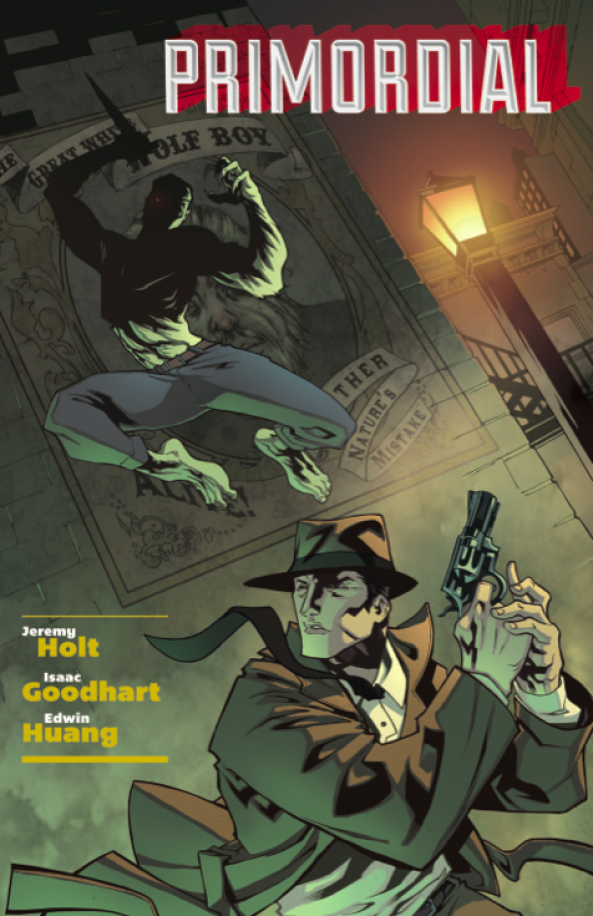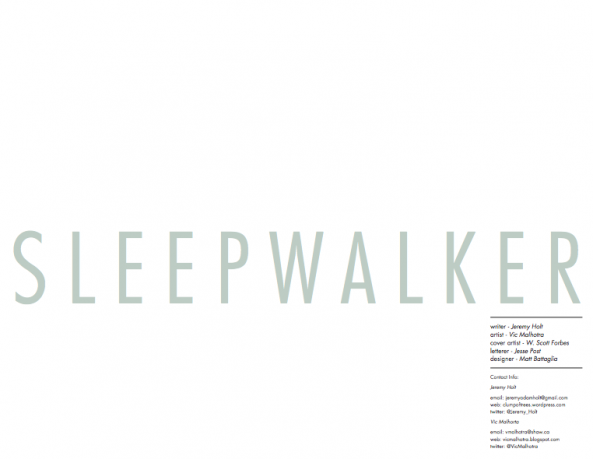
With New York Comic Con just around the corner, I thought I’d take an intermission with Strange Love, and discuss my experiences of pitching at a convention. Let’s start at the beginning.
I am not good at pitching. No matter how many times I do it, it never truly gets easier, only more manageable. This is because it takes a completely different part of the brain that requires no creativity whatsoever. It’s a highly analytical process that requires you to boil down your art into one or two sentences. To make matters worse, you have to–more or less–perform this amongst dozens of other people in the public forum of a convention. So how does one proceed?
Get up and go attend one. This is your reconnaissance. Experiencing the sites and sounds of a convention can help desensitize you to the chaos. I would normally never recommend that your first pitch also be at your first convention. It’s too overwhelming and your success rate gets slashed in half from the shear intensity of it all. My first convention was New York Comic Con two years ago, and I made this very mistake. Looking back, that experience was an emotional mixture of excitement and dumb luck.
However, my very first mistake was made before I ever set foot inside the convention center. I went in with the expectation of presenting myself as a would-be professional, but in reality I had “fanboy” written all over me. What do I mean by this? Let’s examine this a bit closer.

I was dressed as casual as everyone else: A ratty band t-shirt, extremely long hippie hair, and a permanent look of wonder glued across my face. From a first impression standpoint, I couldn’t have looked more like a fish out of water. I didn’t exude the poise and confidence that makes one stand out from a sea of other candidates. Because this was my very first comic book convention, I didn’t have the perspective to see that I should have been treating this like a job interview. Would you show up to an interview in jeans and a t-shirt? Cosplay or no cosplay, pitching at a convention is the most important networking event a creator can attend. Editors are professionals and absolutely notice when you dress the part.
Mind you, combing your hair and wearing a tie doesn’t guarantee that an editor will give you the time of day. What you will (hopefully) hand them should reflect your ambition, passion, and dedication. In other words, your pitch should be polished to the point that it eliminates any guesswork on the reviewer’s end. The only thing they should ask you is, “So when can we print this?” What I handed to an editor at NYCC ’10 was five pages of art and a half completed cover (no ink, no color) that was printed on cheap computer paper. It was assembled–if you can even describe it as such–by one staple in the corner. I still cringe when I remember this.

I was fortunate enough to have met Kurtis Wiebe, who shared his pitch for The Intrepids. He explained to me what it meant to “polish” a pitch. What he had created was–more or less–a comic book. It contained a colored cover with thought put into the logo design, eight pages of completed art (inked, colored, and lettered), issue breakdowns, and character designs. Most important of all, it was beautifully printed in comic book format. I’m not surprised that they got the book green lit by Image Comics after pitching it at Emerald City Comic Con two years ago.

This leads me to the importance of finding a quality and reliable printing service. This usually isn’t cheap, but you have to spend money to make money, right? To put in the extra effort makes your convention pitching that much more effective. Think of it as doing your homework. To show up to class as the only one that completed the assignment correctly sets your nerves at ease, while everyone else is stressing out when they’ve realized their mistake. I cannot speak more highly of RA Comics Direct. You can find them at https://www.nationsprint.com/clients/racomicsdirect/. They print on a wide range of quality paper, provide a PDF proof free of charge, and maintain a top-notch level of customer service. They can get your books to you anywhere in the U.S. within 48 hours.
Continued below
What nobody tells you is that creator-owned comics takes more than simply writing and/or drawing a story. The artist search is only half the battle. Spend time looking for a skilled graphic designer that geeks out over font types, logo design, and has an extensive knowledge of pre-press formatting. They’re worth their weight in gold. An independent creative team (which is what you are) has to seriously consider all aspects of design and production that go into a single issue. Image Comics is a prime example. The creators behind these books are their own editorial/production staff. This is the trade off to retaining 100% of the intellectual property. It’s called creator-owned for this very reason.
I remember attending preview night during New York Comic ’11, and was in line at the Image Comics booth watching several people pitch their projects to Eric Stephenson. What I saw was each and every mistake I had made the previous year. Everyone in front of me was dressed super casual, I even had to refrain from face-palming when one guy was actually wearing a Batman t-shirt. It was no surprise that their pitches mirrored their appearances.

When it was my turn, I could see Stephenson was trying to quickly organize a stack of white papers. I think I even saw a script amongst the handful of poorly printed art samples. I stepped up to the table sporting dark jeans, a dress shirt and tie, and a new haircut. I re-introduced myself to him–having already met in Toronto two months earlier–and handed him two comic books that were my official submissions. He immediately recognized one of them from FanExpo, as it had a title change which he had recommended due to licensing conflicts with an existing Marvel property. He flipped through each one, cover to cover, and said he’d definitely have another look at them. As he walked off, I could see he had placed them on the top of the stack.

The next day, I was informed by several friends including Justin Jordan that when he met Eric for the first time, he was still holding my pitch. I received a lot of good buzz about the pitches throughout the weekend. Everyone I knew was telling me that they heard and/or saw Eric carrying it around. Unfortunately, I eventually received an email from him weeks later to say that he liked my ideas–encouraging me to continue to submit to him–but that the art wasn’t quite there.
To revisit my original point: Pitching may not get easier, but that doesn’t mean you can’t get more comfortable with it. Pitching at a convention may only take up 0.01% of your time, but it’s absolutely vital that you revise and practice what is essentially an elevator pitch. You only get –at most–five minutes to sell your idea, so you have to make every second count. Sometimes you don’t even get that much time. When you head to a publisher’s booth that you think is a right fit for your project, ask to speak to an Assistant Editor [read part 5 for more details on this]. Introduce yourself and ask if you could discuss your pitch. Gauge to see how busy they are, if they don’t appear to have the time, simply ask if they accept leave-behinds instead. All of them do, so just hand them what should be a pristine looking pitch, and thank them for their time. If you do get that rare green lit to actually pitch, do what you’ve spent hours, days, even weeks practicing. It should be so deeply engrained in your mind that when you get asked what your story is about, you can say it as fluidly and naturally as you would your own name.

My very good friend Mandy Patinkin once told me that he found acting to be a very silly activity. The only way he could do it was through the process of substitution–more commonly referred to as method acting. I practice this at every convention. When I’m in the thick of it, I’m not me, I’m The Networker: An individual that is impervious to the social anxieties that would make most people run in the other direction. I walk into the fire completely uninhibited. All of my experiences–good or bad–have sculpted this character that I slip on like a suit. At this point it feels like a second skin.
Continued belowNow this approach isn’t for everyone. The point is to be outgoing and amiable by any means necessary. It’s important to take criticism well. No matter how confident you are in your project, remember that you are simply acting like you’ve got your shit together. Leaving yourself no room for improvement will have you coming off as arrogant, and no one wants to work with that guy/girl. People remember faces and personalities long before they do a name. Even if you don’t have something to show publishers, being present and introducing yourself goes a very long way. Attending conventions is also the time to be networking with other creators, as this is the most conducive way to start building your personal inner network.
Let’s be honest, this industry is small. With that comes a certain territory that can be difficult to navigate. Whether anyone admits it or not, it always help to know the right people. Creators work in teams that they like. It’s only natural that solid friendships are formed from this, and referrals are like Willy Wonka’s golden tickets. These connections inevitably become a replenishing resource from which you can start to assemble your own team that you will trust and count on. That’s exactly how I got my first Image Comics publication in the back of Kurtis Wiebe’s Grim Leaper series. I demonstrated the talent, but it was the genuine friendship that I built with him outside of comics that got me the invite. From there, he introduced me to his network of friends that I’ve managed to include myself into. They’ve been extremely encouraging and we’re always helping each other out with recommending various colorists, letterers, and artists that we may know.
Pitching is very much its own art form, which requires dedicating time and energy to honing the craft. Each time you do it, only helps inform your decision making the next time around. This journey is part of the process and a healthy amount of humility will grease your wheels insuring a smoother ride. Remaining humble and appreciative of any advice you might receive from established talent will foster that eagerness to improve each time you fail. And believe me when I say: You will fail a lot.
If after reading all of this, you feel even more excited to go out and make some comics, I’d say you’re already ahead of the curve. Good luck.







